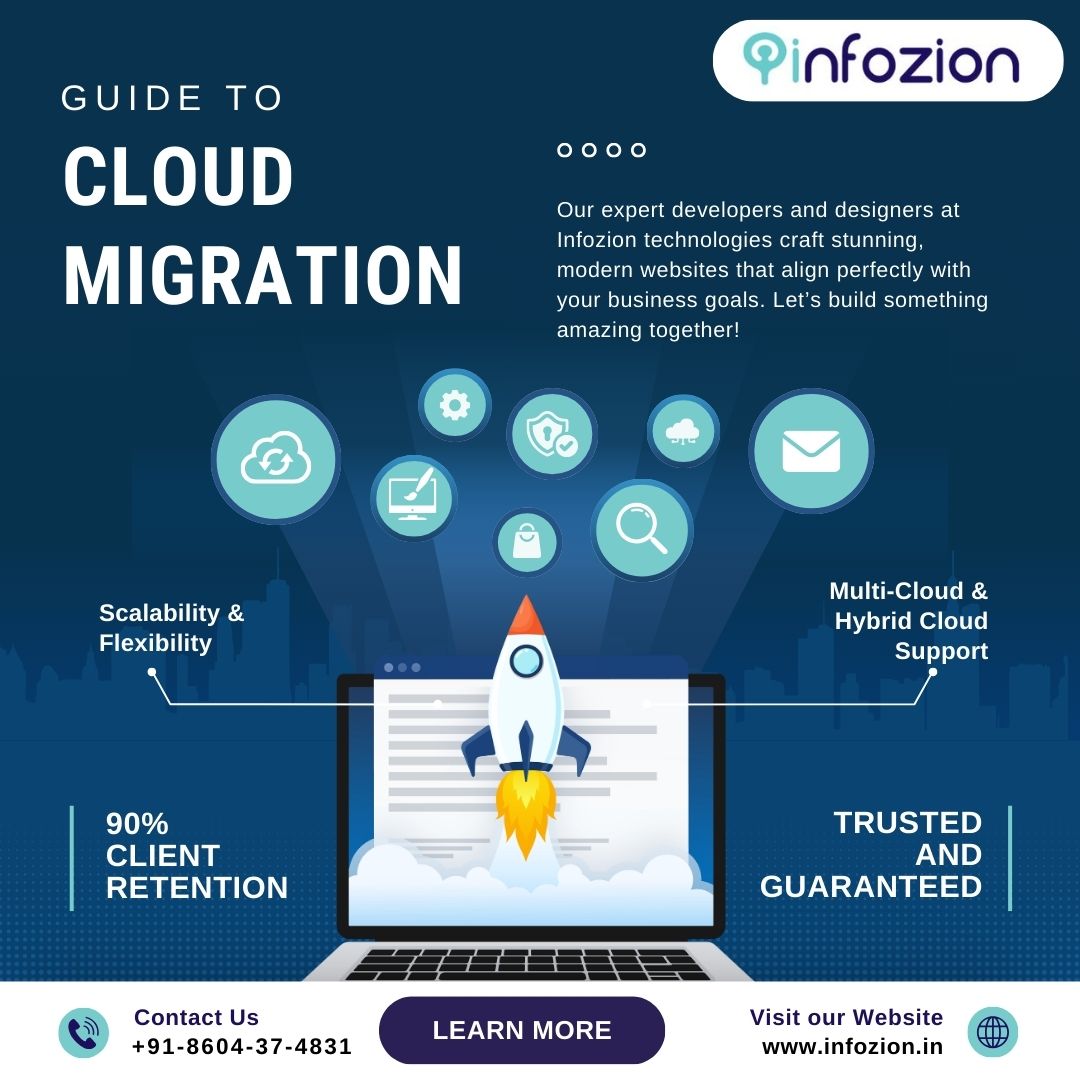The Ultimate Guide to Cloud Migration

The Ultimate Guide to Cloud Migration
Introduction to Cloud Migration
The Ultimate Guide to Cloud Migration- Cloud migration is the process of moving digital assets—including applications, data, and workloads—from on-premises infrastructure to cloud-based environments. This transition enhances scalability, improves performance, and reduces operational costs. Businesses across industries are increasingly adopting cloud migration to stay competitive and meet evolving IT demands.
Key Features of Cloud Migration
Migrating to the cloud involves several core features that enhance business operations and IT efficiency:
- Automated Migration Tools – Streamline the transition process with minimal downtime.
- Data Security & Compliance – Built-in encryption and security protocols protect sensitive information.
- Scalability & Flexibility – Adjust resources on demand to match business needs.
- Multi-Cloud & Hybrid Cloud Support – Integrate on-premise systems with multiple cloud platforms.
- Cost-Optimization Tools – Pay-as-you-go models reduce IT expenses and operational overhead.
Benefits of the Best Cloud Migration Strategies
Choosing the right cloud migration approach can unlock significant advantages, such as:
- Reduced IT Costs – Minimize hardware expenses and maintenance costs.
- Enhanced Performance – Cloud services offer faster processing and reduced latency.
- Better Collaboration – Cloud-based tools enable real-time collaboration from anywhere.
- Disaster Recovery & Backup – Secure data storage solutions protect against data loss.
- Improved Security Measures – Advanced encryption and compliance frameworks enhance data safety.
Advantages of Cloud Migration
Migrating to the cloud provides both short-term and long-term benefits, including:
- Business Agility – Rapid deployment of applications without infrastructure constraints.
- Global Accessibility – Employees and customers can access data securely from any location.
- Eco-Friendly IT Operations – Cloud providers optimize energy consumption and reduce carbon footprints.
- Automatic Updates & Maintenance – Cloud providers handle security patches and software updates.
Top Cloud Migration Services
Several leading cloud platforms offer robust migration services:
- Amazon Web Services (AWS) Cloud Migration – AWS Migration Hub, Server Migration Service, and Database Migration Service.
- Microsoft Azure Cloud Migration – Azure Migrate, Site Recovery, and Data Box.
- Google Cloud Migration Services – Migrate for Compute Engine, Transfer Appliance, and Cloud Storage Transfer Service.
- IBM Cloud Migration – IBM Cloud Pak for Applications, Lift-and-Shift services, and AI-driven optimization.
- Oracle Cloud Migration – Oracle Cloud Lift Services, Database Migration Services, and Autonomous Cloud tools.
How to Get Started with Cloud Migration
Embarking on a cloud migration journey requires careful planning and execution. Follow these steps for a successful migration:
- Assess Your IT Infrastructure – Identify workloads and applications suitable for migration.
- Define a Migration Strategy – Choose between Lift-and-Shift, Replatforming, or Refactoring based on business goals.
- Select a Cloud Provider – Compare AWS, Azure, Google Cloud, and others based on cost, security, and scalability.
- Develop a Migration Plan – Create a step-by-step roadmap for data and application migration.
- Execute & Monitor the Migration – Utilize automation tools for seamless migration and track performance metrics.
Optimize & Secure Cloud Resources – Implement security best practices and cost-management strategies.





